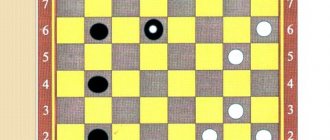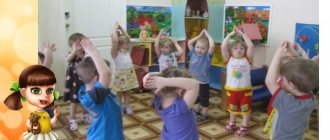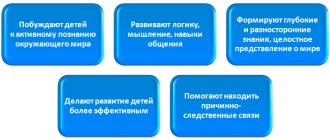The game of checkers, along with chess, is rightfully recognized as one of the most intellectual games. It stimulates:
- mental activity of children;
- develops spatial imagination;
- trains attention and memory;
- develops logic;
- develops communication skills;
- instills perseverance.
When can you start learning to play checkers?
Kindergarten age is considered the most appropriate to begin a step-by-step learning of the rules of the game of checkers. The skills that a child will acquire as a result of the game: to calculate the situation several moves ahead, make important decisions and bear responsibility for them - qualities that will be very useful to him in adult life.
There are several variations of the game in the world - Turkish, English, Italian checkers. They differ in color palette, move options, number of fields and, accordingly, the number of pieces. Let's focus on classic Russian checkers.
Checkers game: rules
- The checkers board for the Russian version of the game consists of 64 squares, painted black and white; the checkers are also black and white. Before the start of the fight, all figures are placed in the bottom three rows against a dark background.
- All moves in the game are carried out only on a dark background.
- The advantage of the first move always belongs to the white pieces.
- The figure moves forward diagonally to any free cell.
- If the player touches a piece, then he must move to it.
- The moves between the opponents alternate.
- If there is an enemy piece in front of the checker, and the field is free after it, then it can be eaten by making a move both forward and backward.
- Walking in the other direction with this position of the pieces is prohibited, even if you expose yourself to a blow
- In one move, if the enemy pieces are positioned well, you can eat several checkers at once.
- If the player managed to reach the opposite end of the board, then he turns over his piece, it turns into a king.
- The queen can move diagonally forward any number of squares. The queen also has access to backward moves.
- Any figure can eat the queen, given the appropriate position.
- The first player to eat all of the opponent's checkers wins.
How to teach a child to play checkers?
- The first lesson should begin with familiarization with the playing field. Let the child first try to arrange the figures correctly on his own; if it doesn’t work, come to the rescue.
- No need to hurry. Play only when the child wants it.
- Don't let your baby become overtired. No matter how interesting your game is, it is necessary to take breaks for physical education.
- Praise, encourage your child, create a situation of success for him, point out the most successful combinations, inspire victories and new achievements.
- Don’t scold if your child doesn’t understand something or makes the wrong move, be more patient.
- Don't give in! If the child wins all the time due to the fact that you have successfully “arranged” everything, then there will be no sense in such a game.
Along with the classic game of checkers, you can teach your child to play “Chapaev” and “Ugolki”. These types of checkers are no less interesting and exciting.
Rules of the game "Corners"
- The player must place a house of checkers.
- One person posts at the top of the board on the right, and the second participant at the bottom left.
- The house is built in the form of a rectangle, 4 pieces are placed in length, 3 pieces in height.
- Using horizontal and vertical movements of checkers, the opponent must arrange moves for himself in order to quickly move all the components to the opponent’s place. You are allowed to jump over one, two or three checkers.
- You can stop the moves yourself at any time.
- The game will be considered over if one of the participants is the first to transfer all the checkers to the opposite place of the opponent.
Explain to your child the strategy for playing corners:
- You need to strive to make several jumps in one move - this way the checker will quickly move to the opposite corner and create conditions for “multi-jump” moves, placing one or more checkers so that you can “jump” over them.
- As soon as possible you need to remove the checkers from your corner, lining them up closer to the center. This creates a barrier that blocks enemy moves. The farther from your home you can place this barrier, the better.
- Try to line up checkers so that the enemy is forced to bypass your barrier in order to gain time.
Pillar checkers (Russian towers)
The rules of Russian post checkers are the same as the usual checkers rules, but with the following differences:
- The opponent's beaten checker is not removed from the board, but is taken under the striking tower.
- If a tower is under attack, then only the top checker is removed from it, after which the checker (or king) that was under it takes over in accordance with its color and rank.
- If several opponent's checkers are fighting, then they climb one after another under the beating piece sequentially during the battle, and a “tower” (“pillar”) is formed on the final field.
- The tower moves all at once and moves according to the rules of its top checker, like a simple checker or queen.
- A tower, like a single checker, can go into kings, with only the top checker becoming a king.
A consequence of the capture rules (1) and (2) is that a player can release his checkers, previously captured by an opponent, and a captured and subsequently released king in the future, as is customary in Russian post checkers, retains the status of a king. (But there is also a variant of the rules, according to which the captive queen becomes simple). The second consequence of the changed rules of the game, since knocked checkers (towers) are not destroyed and are not removed from the board, is a change in the PURPOSE of the game. The goal of the game of pillar checkers is to capture all of the opponent's checkers, as well as to deprive his free checkers (towers) of moves (locking them).
The listed rules are illustrated in the figure. Let's follow the shock move of a white simple checker from field c1 to the final field a7 through intermediate fields a3 and c5. Wherein:
- The top one checker is removed from the black (three-checker) tower on square b2,
- a single checker is taken from field b4 (more precisely, a tower consisting of one checker),
- from a tower consisting of a lower white and an upper black checker and standing on the b6 square, the top black checker is removed and the white checker is freed,
As a result, on the final square a7 a tower is formed from one top white checker and three bottom black ones.
The essence of pillar checkers is defined in different ways. They are sometimes called checkers with the law of conservation of energy; They are also said to represent a peculiar mixture of “strong” checkers and giveaways, since the goal of the game is to capture all the opponent’s checkers, but during “combat operations” tactical and strategic techniques characteristic of giveaways are used to achieve victory.
The strategy of playing towers differs significantly from the well-known strategy of playing checkers: the benefit from capturing certain fields becomes less significant, just as the loss of one or two or even three or four checkers becomes less significant, since they can later be returned to their camp.
But such characteristics of individual towers as:
- tower height - the more of its own checkers enter the tower, the greater the striking force it has (But! An excessive increase in the height of an individual tower leads to the exposure of other sections of the field and, consequently, to a weakening of the position!);
- “negative potential” - a “weak” tower (or a tower with 1-2 of its own checkers on top), holding several of the opponent’s checkers in captivity, can be attacked and turned by the opponent into his own.
The following strategy is quite effective:
- capture as many enemy checkers as possible under your towers, while simultaneously moving towers with a large number of “captive” checkers deeper into your position; attack the enemy with the heaviest towers, while trying to exchange his weakest towers in order to “free” his own pieces.
Fighting techniques known from checkers are also subject to significant revision. If in ordinary checkers blocking the opponent's checkers is a rare and unexpected game technique, then in the tower endgame blocking, in fact, becomes one of the main means of ending the game. All this turns post checkers into an extremely dynamic and unpredictable game.
Rules of the game "Chapaev"
- Each side must place checkers in horizontal rows, 8 pieces in each row.
- The opponent must click his finger on the chips to knock out everything from the opponent.
- The end of the game will be considered when all the opponent's pieces are knocked out.
- The opponent begins his move after one participant loses his piece or fails to knock out someone else’s.
- The player who was the first to knock out all the chips from the opponent moves one row higher in the second round.
In addition to its developmental value, playing checkers instills in children qualities that are important for their future life, such as the ability to think independently and bear responsibility for decisions made, and to deal adequately with failures and defeats. Since most children in preschool age are by nature very mobile and active and find it difficult to concentrate their attention for a long time, playing checkers develops in them such a quality as perseverance.
I hope the article was useful to you and you can easily teach your child to play checkers. I advise you not to forget about playing chess. Good luck!
Educational game for preschool children 5-7 years old “Colorful Checkers”
Game “Multi-colored checkers” for older preschoolers
Olga Stanislavovna Sredina, teacher, head of the art studio of the Central Children’s Educational Institution No. 1 “Bear Cub”, Yuryuzan, Chelyabinsk region. Goal: Teaching the rules of games with colored checkers Objectives: Developing logic, memory, coherent speech, fine motor skills. Teaching recognition of the silhouettes of letters and their construction in a given space. Cultivate attention, precision and accuracy. Consolidate knowledge of the colors of the rainbow and their shades, the concepts of warm, cold and achromatic colors. Study or test knowledge of the letters of the Russian alphabet. Introduce the diversity of the surrounding world (names of animals and birds). You can use children's names, names of flowers, trees, fish.
Age category: Senior – preparatory groups (4 – 7 years)

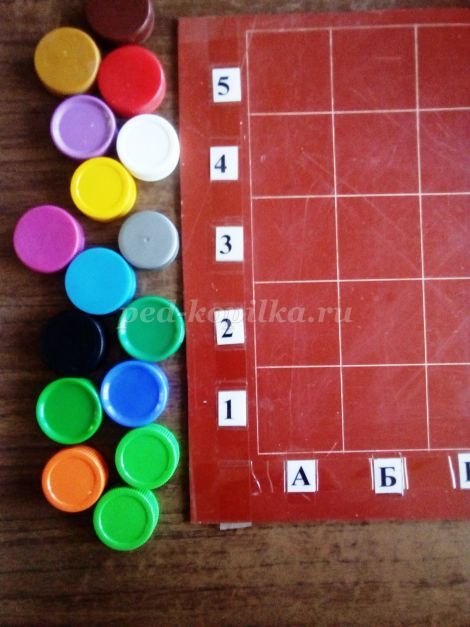
Multi-colored gouache caps, box for caps. A board laid out like a chess board, but with squares about 5 centimeters by 5 (because the gouache caps are larger than checkers and the pattern shifts when laying out the letters).
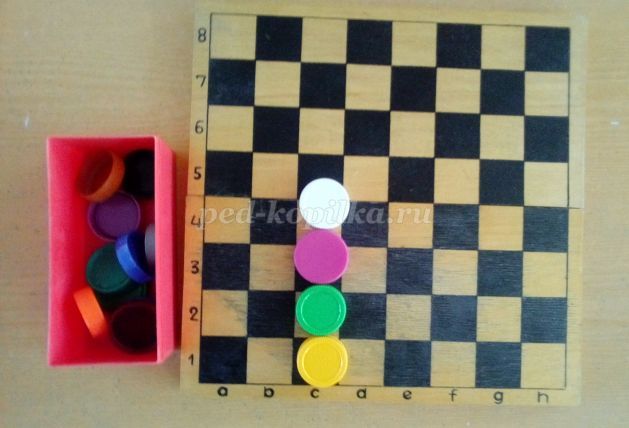
Letters and numbers can be drawn or printed. Figures from Kinder surprises (one or several for each person) Progress of the game lesson:
Children take the lids out of the boxes and lay them out on the table.
Children look at numbers and letters. We agree that the letters are street names, and the numbers are house numbers. We take a figurine (lion cub, penguin, gnome or dinosaur) and play with it. Where does our hero live? First, the teacher makes an address and shows it on his board, helps the children find the location on their boards (A3, B4, B1, D 5, D2) or other options. Once you are sure that the children understand the tasks, you can continue the game. While playing, children follow the adult’s instructions, without knowing what they should subsequently achieve. It is interesting to form letters without completely changing the chips, but only rearranging some of them. If you show a few examples, then the children themselves can figure out how to get N from P by rearranging just one chip. From G you can make T and vice versa. From B you can easily get L. 1- letter P
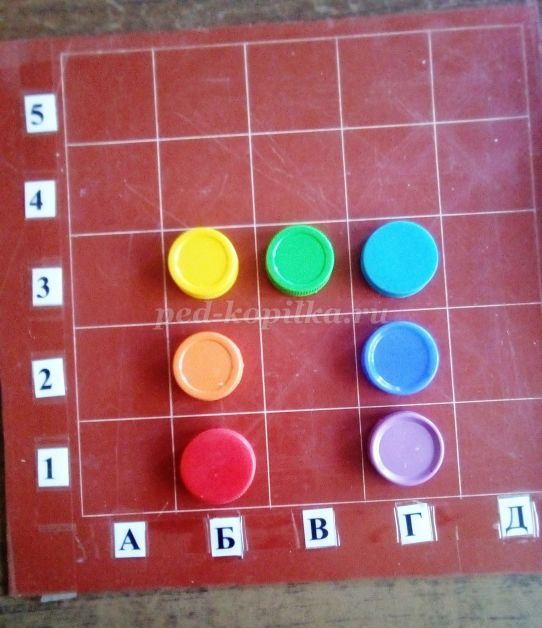
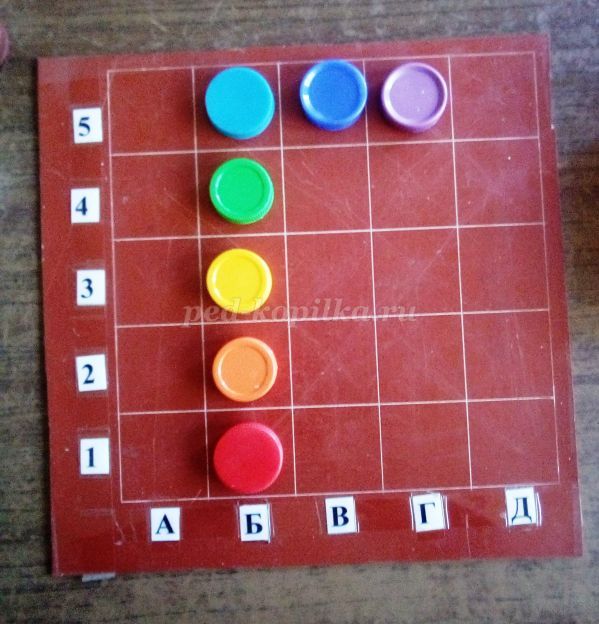
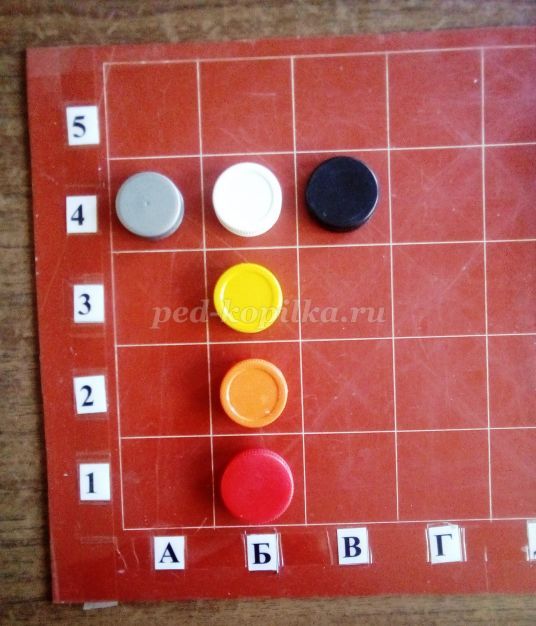

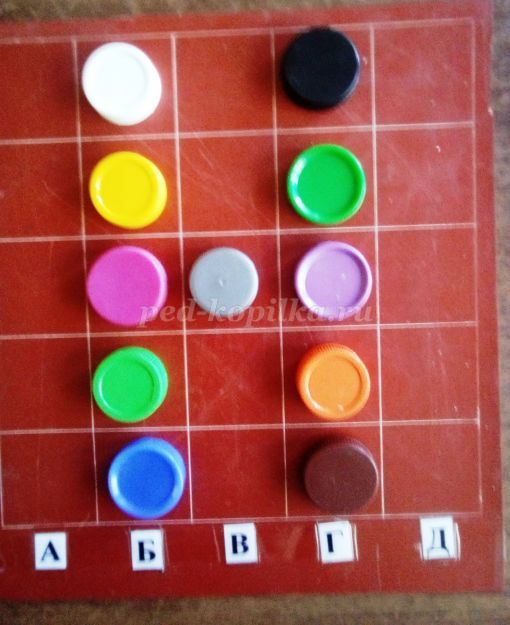

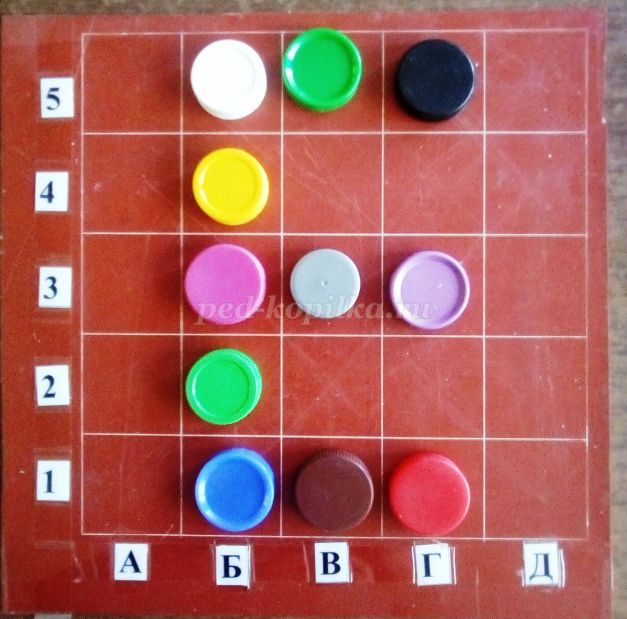

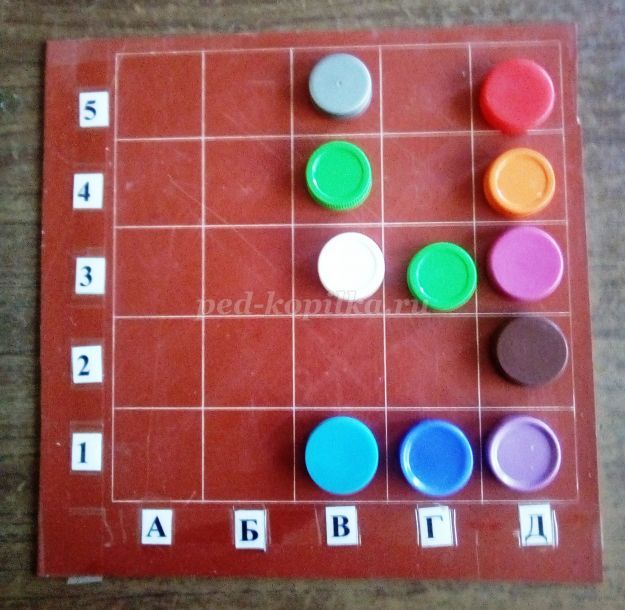
11- letter X

12- letter C
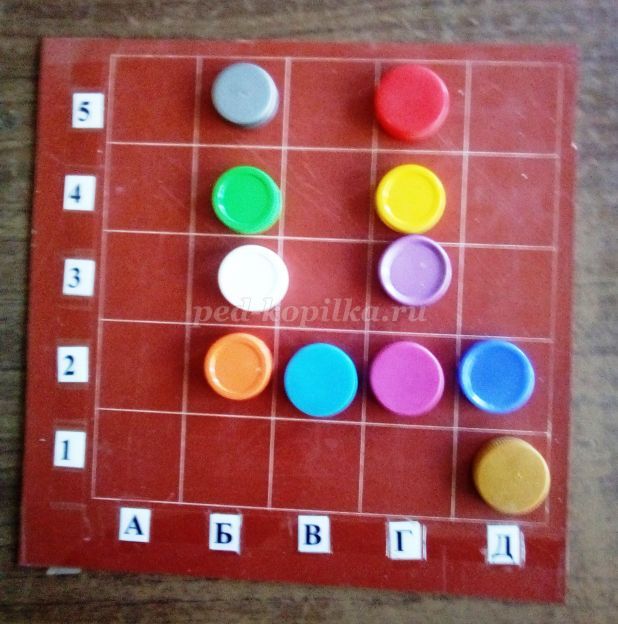
letter P
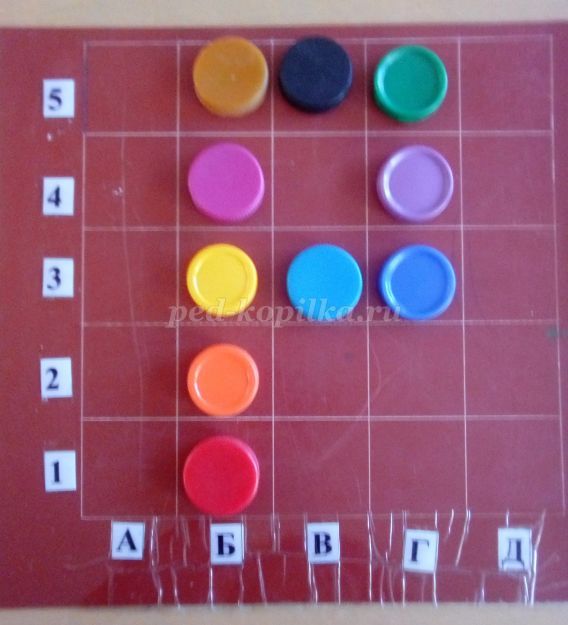
letter C
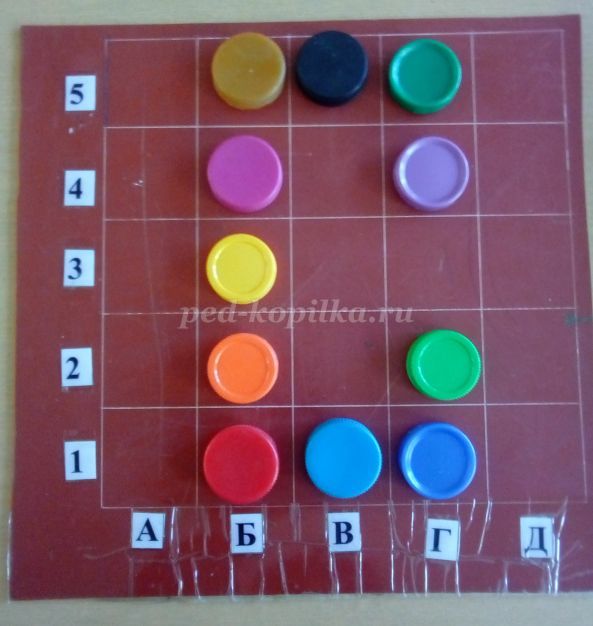
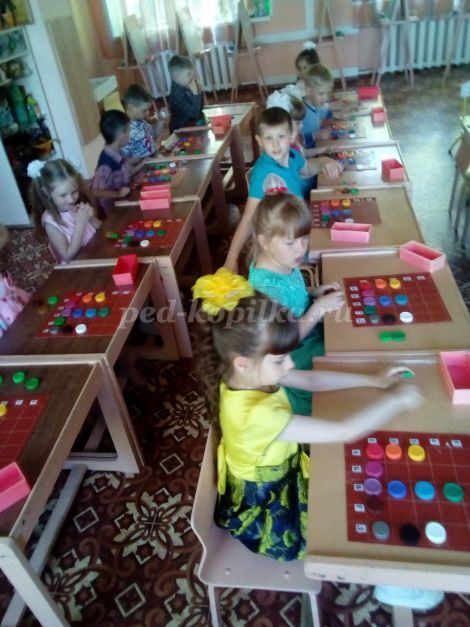
We recommend watching:
Games for the development of visual thinking in children 5-7 years old Didactic game for teaching literacy to older preschoolers Didactic games for developing attention in children 5 - 7 years old Games for a walk with children from 5 years old
Similar articles:
Games for the development of imaginative thinking in children 5-8 years old
Games for the development of musical memory in children 4-8 years old
Games to develop a sense of rhythm in children 4-6 years old
Word games on a sports theme for older preschoolers
Logical tasks for children 5-6 years old in pictures
